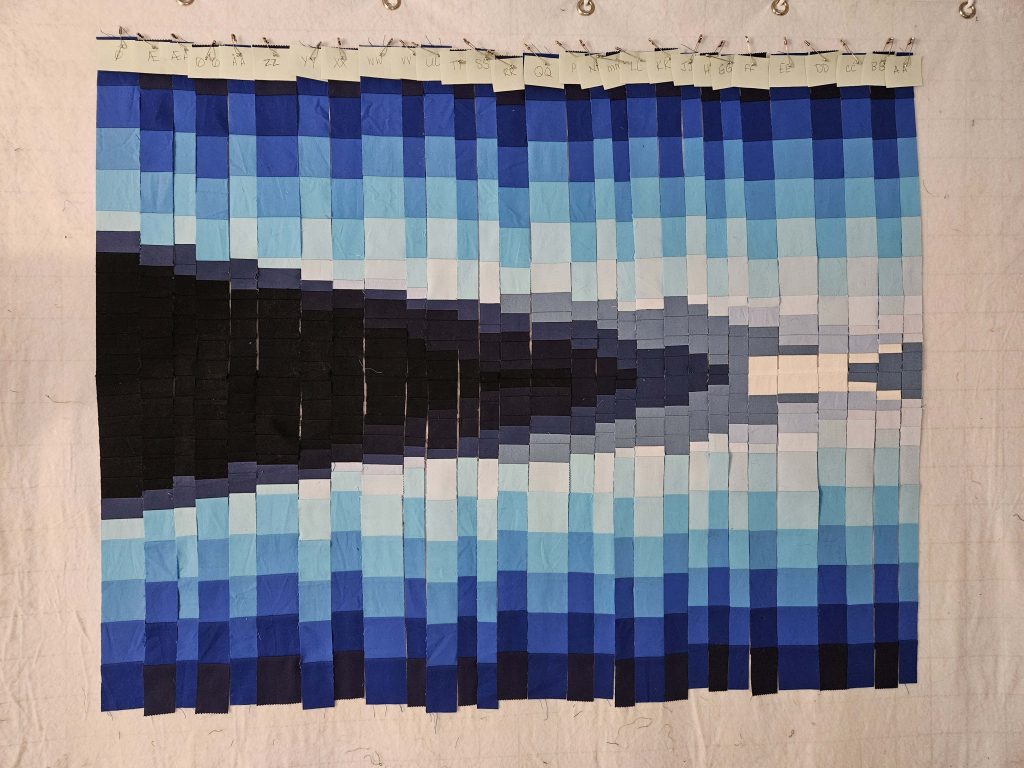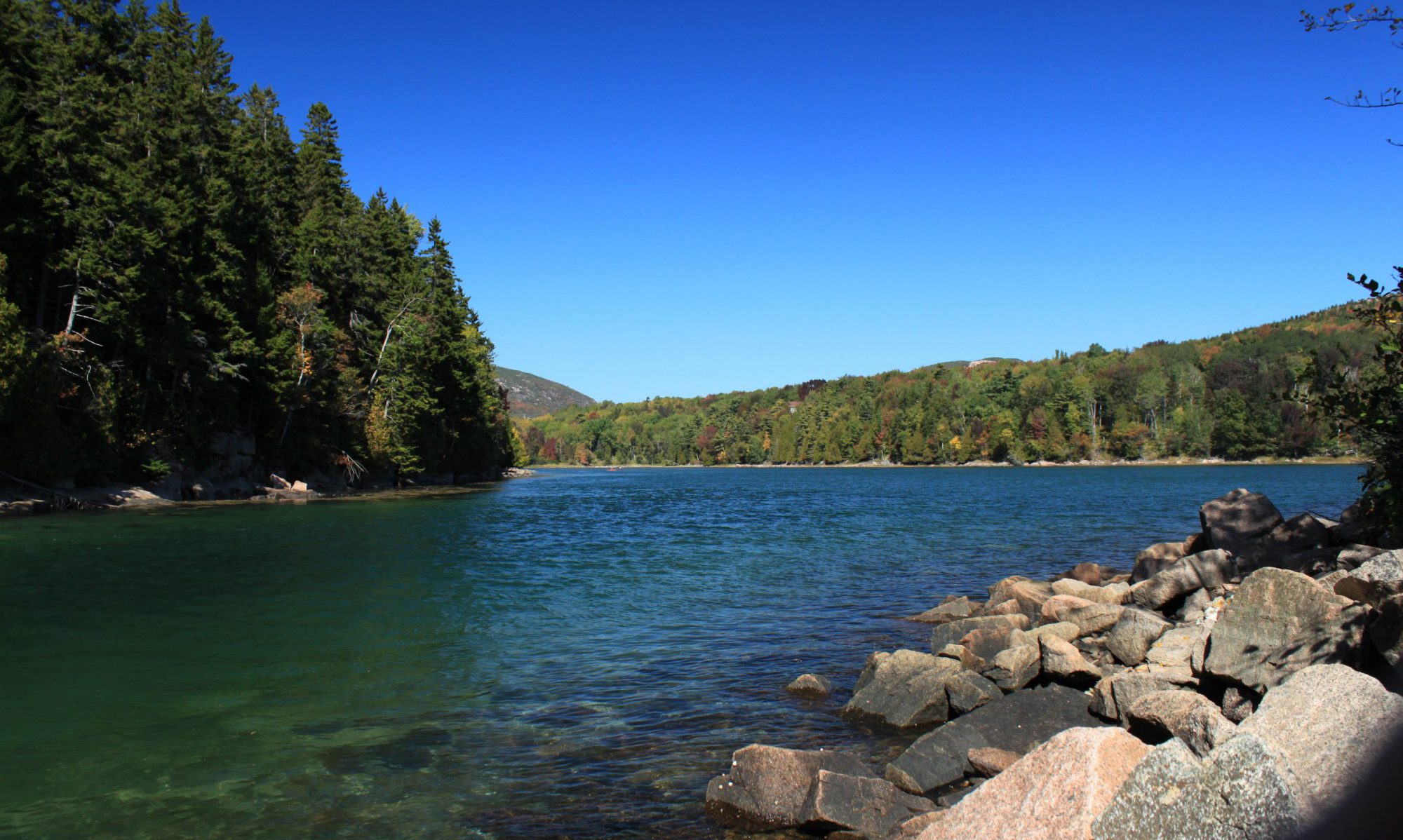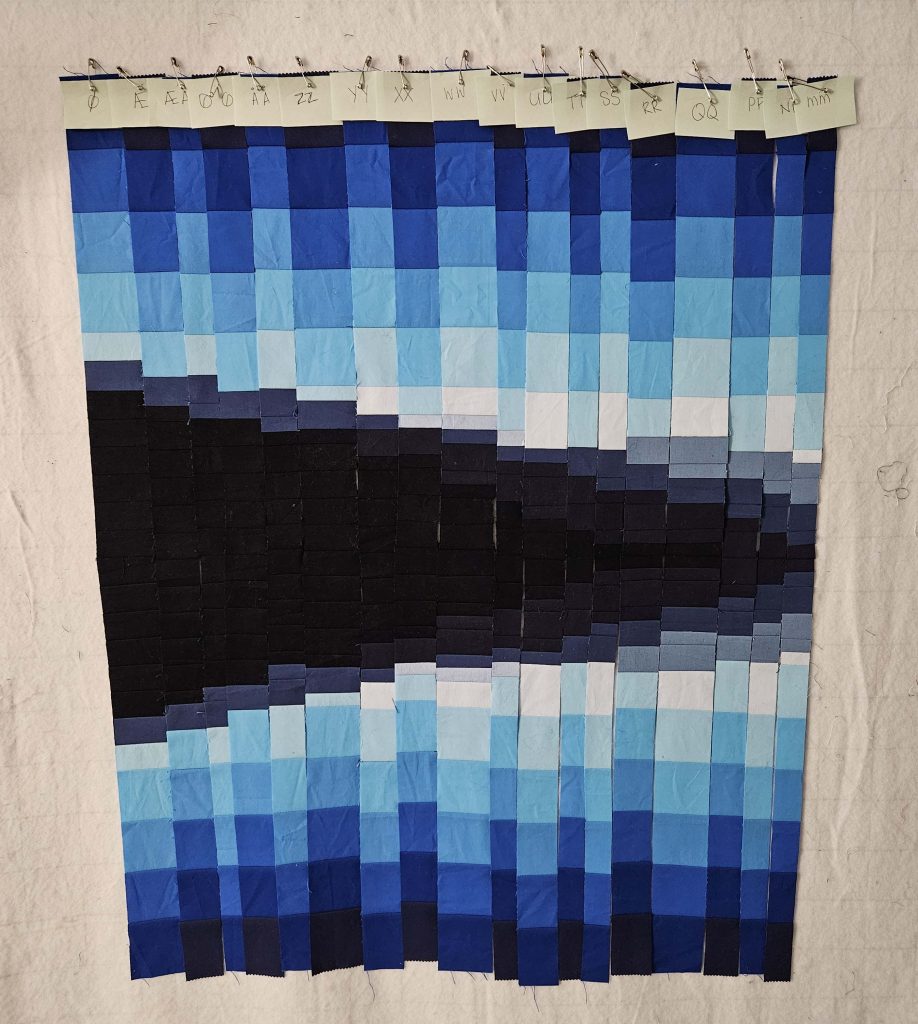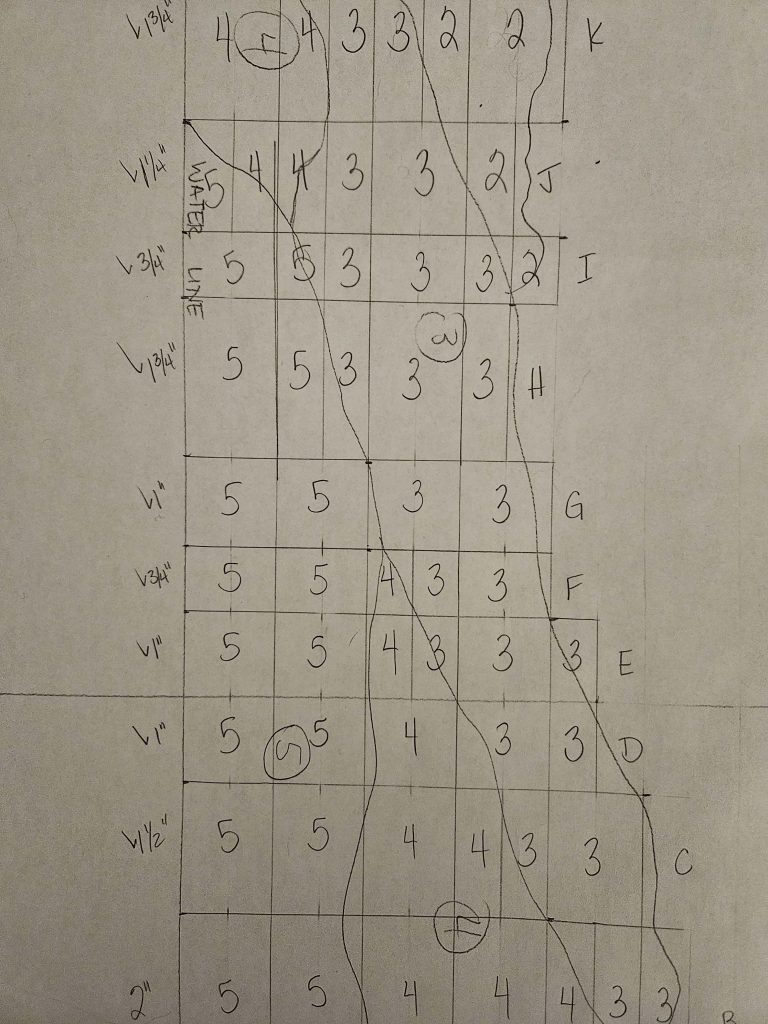In between loads of laundry today, I was able to get to the halfway point of the College Fjord quilt. And now I’m at a bit of a standstill.

Some notes on what has changed since the last picture:
- I switched out one of the blues. In this image, in the seventh column from the left, it’s the light sky blue just above the darker mountain blue. The color that was originally there was a slightly lighter sky blue – that color is now the next sky blue down. It was a pain in the ass to switch it out, but I like this one much better.
- I decided that it didn’t make a difference that some of the lightest sky blues are nearly indistinguishable from the lightest mountain blues. There is definitely a difference if you look closely, but when you look at the overall image, they sort of blend together. And you know, what? The mountains in the original image sort of blend into the sky, too. So I’m not going to sweat it.
- The columns starting with KK (you can see the Post-It notes with the column label at the top), going to the right, were done with a slightly different, much faster process than the ones before them. And interestingly enough, they are getting to be more consistent in size, so there are fewer seams that don’t line up, at least right now. It will be interesting to see if that holds when I begin sewing the columns together.
This is 29 columns. There are 54 total, so I’ve completed just over half of them. Top to bottom is 32”; that is the finished size (unless I decide to remain true to the image and cut 2” off of the bottom). The finished quilt will be 54” wide – currently, this is just under 40” wide with the columns laid out side-to-side like this. Each of these columns will lose half an inch when sewn together – seam allowances are a thing, after all. The narrowest columns are currently 1”. So when you’re looking at this image, keep in mind that when these 29 columns are sewn together, the piece will be 14” narrower than it is now.
Once I got to this point, I stared at it on my design wall for a long time. I had actually started running out of space on the design wall and had to move it up to the top so that I can fit the remaining part of the image below it.
I’m still debating how I’m going to build this quilt. Is it going to be a quilt-as-you-go kind of thing, or should I build the entire top and then attempt to quilt it? I briefly debated starting to sew the columns together today, which I cannot do if I want to quilt-as-I-go. I’m having trouble imagining the columns squished together, so I debated trying it out to see what it would look like. I’m desperately suppressing the urge to sew the columns together. I want to see what it’s going to look like in the end! But until I figure out how I want to build it, and especially quilt it, I don’t want to take any steps that would require even more use of the seam ripper.
Part of my hesitation is that I’m still making design decisions. I switched out a whole color and replaced it with a new one – TODAY. I’m still not sure if I’m happy with those white blocks on what is now the right side (will be the middle eventually). I can’t even start to quilt-as-I-go if there’s any chance that I might want to change things up later. And I can’t guarantee that I won’t change anything. I’m just not at that point.
I’m also still debating snow. Part of me likes it the way it is. Part of me want to put in snow. But if I do put in snow – do I follow the contours of the image? Or do I put snow in squared-off lines? The latter would be awful, but the former might ruin the bargello format (which arguably is holding on by a thread anyway).
Still planning on a water line. Still hanging on to mother-of-pearl buttons for the clouds. Need to find a pale yellow or two for the sun at some point. But things are moving along.




